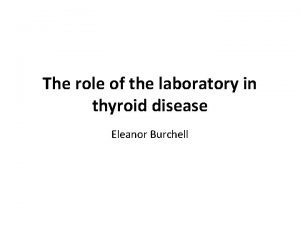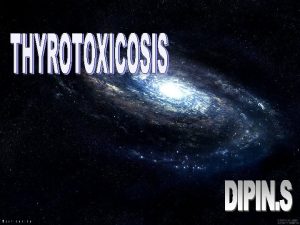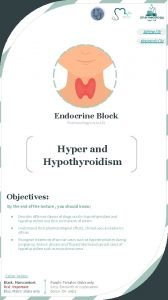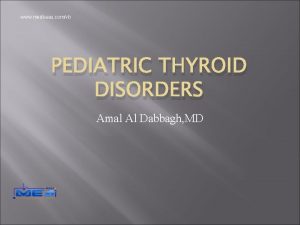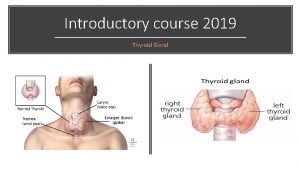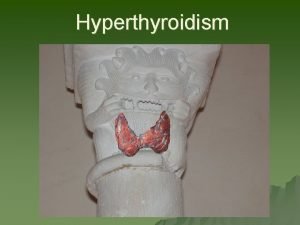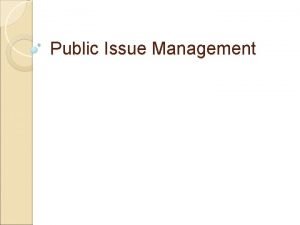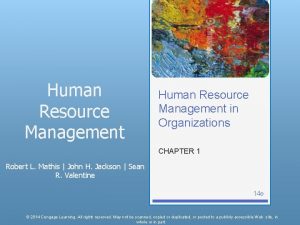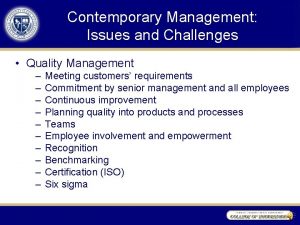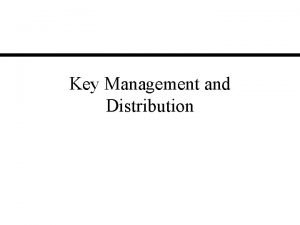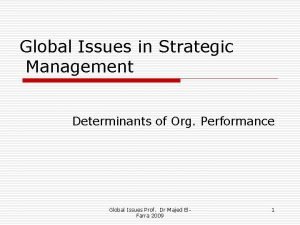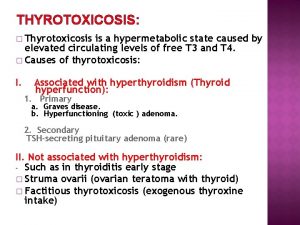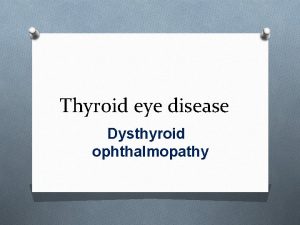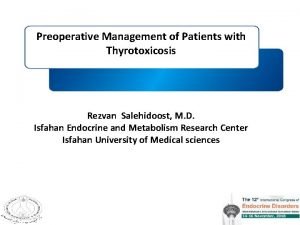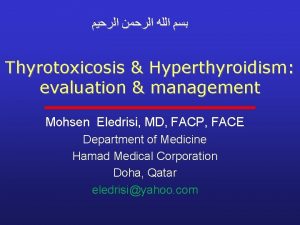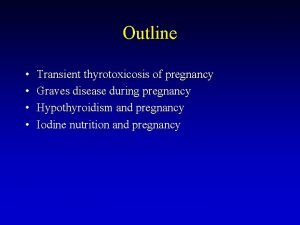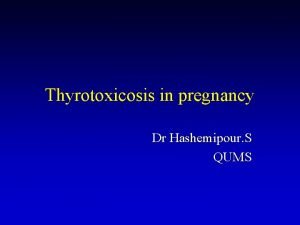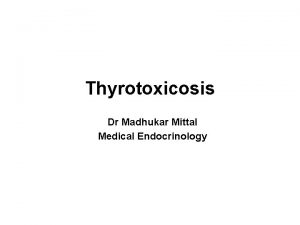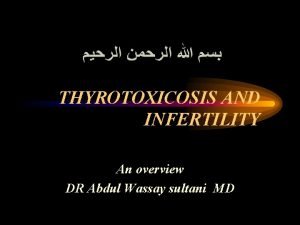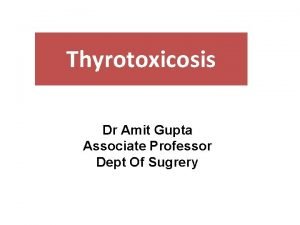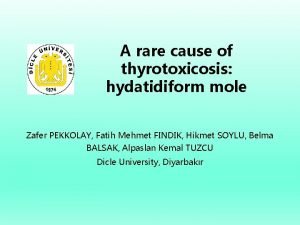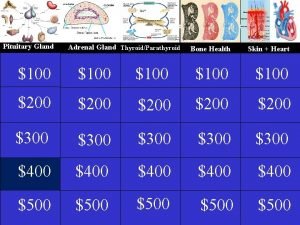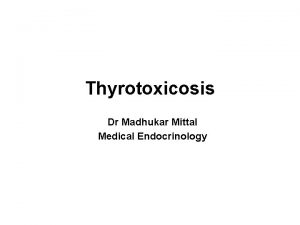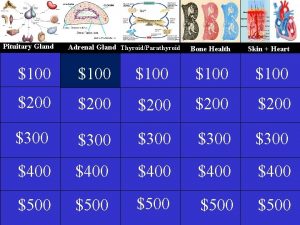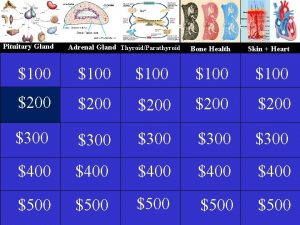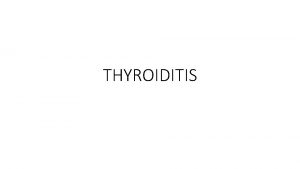Issues in the Management of Thyrotoxicosis in the





















































- Slides: 53


Issues in the Management of Thyrotoxicosis in the Third Trimester and Post-partum Period Fereidoun Azizi Research Institute for Endocrine Sciences Shahid Beheshti University of Medical Sciences Tehran, I. R. Iran

Thyrotoxicosis in pregnancy • Occurs in 0. 2% of women • Mostly caused by Graves’ disease

Causes of hyperthyroidism in pregnant women Graves’ disease Gestational transient thyrotoxicosis Molar pregnancy Subacute or silent thyroiditis Toxic adenoma Multinodular toxic goitre Iodine-induced thyrotoxicosis Thyrotoxicosis factitia Lao TT. Current Opin Obstet Gyne 2005; 17: 123

Guideline of the American Thyroid Association for the diagnosis and Management of Thyroid Disease during Pregnancy and Postpartum The American Thyroid Association Taskforce on Thyroid Disease During Pregnancy and postpartum Alex Stargnaro-Green (Chair), Marcos Abalovich, Erik Alexander, Fereidoun Azizi, Jorge Mestman, Roberto Negro, Angelina Nixon, Elizabeth N. Pearce, Office P. Soldin, Scott Sullivan and Wilmar Wiersinga 84 Questions 76 Recommendations Thyroid 2011; 21: 1081 -1125

Management of Thyroid Dysfunction during Pregnancy and Postpartum: An Endocrine Society Clinical Practice Guideline Leslie De Groot, Marcos Abalovich, Erik K. Alexander, Nobuyuki Amino, Linda Barbour, Rhoda H. Cobin, Creswell J. Eastman, John H. Lazarus, Dominique Luton, Susan J. Mandel, Jorge Mestman, Joanne Rovet, and Scott Sullivan J Clin Endocrinol Metab, August 2012; 97 (8): 2543 -2565

Maternal thyroid physiology Chan SH, Boelaert K. Optimal management of hypothyroidism, hypothyroxinaemia and euthyroid TPO antibody positivity preconception and in. Pregnancy. Clinical Endocrinology 2015; 82: 313– 326.

Physiologic changes in pregnancy that influence thyroid function tests Physiologic change Thyroid function test change Thyroid-binding globulin Serum total T 4 and T 3 First trimester h. CG elevation Free T 4 and TSH Plasma volume T 4 and T 3 pool size Type III 5 -deiodinase (inner-ring deiodination) due to increased T 4 and T 3 degradation (resulting in requirement for increased hormone production) Thyroid enalrgement (in some women) Serum thyroglobulin Iodine clearance Hormone production deficient areas in iodine- h. CG= human chorionic gonadotropin; TSH= Thyroid-stimulating hormone; T 3= triiodothyronine; T 4= thyroxine; = increased; =decreased Lazarus JH. Treat Endocrinol 2005; 4: 31

FT 4(pmol/L) 5. 0 15 4. 0 10 0 1. 5 50 40 1. 0 30 20 0. 5 10 0 0 10 20 30 40 Postmenstrual age in weeks Glinoer, Endocr Rev 1997; 18: 404 -433 h. CG (I. Ux 1000/L) 0 FT 3(pmol/L) TSH (m. U/L) 20

Sample trimester-specific reference intervals for TSH* Reference Year 1 st trimester 2 nd trimester 3 rd trimester Stricker 2007 1. 04 (0. 09 -2. 83) 1. 02 (0. 20 -2. 79) 1. 14 (0. 31 -2. 90) 0. 94 (0. 08 -2. 73) 1. 29 (0. 39 -2. 70) Haddow Panesar 2001 0. 80 (0. 03 -2. 30) 1. 10 (0. 03 -3. 10) 1. 30 (0. 13 -3. 50) Soldin 2004 0. 98 (0. 24 -2. 99) 1. 09 (0. 46 -2. 95) 1. 20 (0. 43 -2. 78) Bocos-Terraz 2009 0. 92 (0. 03 -2. 65) 1. 12 (0. 12 -2. 64) 1. 29 (0. 23 -3. 56) Blatt 2012 1. 01 (0. 10 -2. 50) 1. 14 (0. 35 -2. 75) 1. 26 (0. 43 -2. 91) Azizi 2013 1. 7 (0. 2 -3. 9) 1. 9 (0. 5 -4. 1) 1. 8 (0. 6 -4. 1) * median TSH m. IU/L with 5 th and 95 th centiles or P 2. 5 and P 97. 5 between brackets. Soldin OP et al. Clin Chem Acta 2004; 349: 181 Haddow JE et al. J Med Screen 2004; 11: 170 Panesar NS et al. Ann Clin Biocliem 2001; 34: 67 Stricker R, et al. Eur J Endocrinol 2007; 157: 509 Bocos-Terraz JP, et al. BMC Res Notes 2009; 2: 237 Blatt AJ, et al. J Clin Endocrinol Metab 2012; 97: 777 Azizi f, et al. Thyroid 2013; 23: 354

Guidelines for Serum TSH During Pregnancy • Recommendation 1 Trimester-specific reference ranges for TSH, as defined in populations with optimal iodine intake, should be applied • Recommendation 2 If trimester-specific reference ranges for TSH are not available in the laboratory, the following references ranges are recommend: 1 st trimester, 0. 1 -2. 5 m. IU/L; 2 nd trimester, 0. 2 -3. 0 m. IU/L; 3 rd trimester, 0. 3 -3. 0 m. IU/L Thyroid 2011; 21: 1081 -1125

Problems with FT 4 in pregnancy • High TBG concentrations result in higher FT 4 values. Low albumin in serum will yield lower FT 4 values. • In pregnant women higher concentrations of TBG and NEFA and lower concentrations of albumin relative to sera of non-pregnant • Seven commercial FT 4 immunoassays in 23 euthyroid women at term: Albumin-dependent methods showed marked negative bias with up to 50% of subnormal values Other methods gave values above their non-pregnant reference values Herbomes M et al. Clin Chem Lab 2003; 41: 942 Roti E. J Endocrinol Invest 1991; 14: 1 -9

Accurate Measurement of FT 4 The latest development in the field of FT 4 analysis is to measure free thyroid hormones in the dialysate or ultrafiltrate using online solid phase extraction - liquid chromatography/tandem mass spectrometry. The 95% FT 4 reference intervals decreased gradually with advancing gestational age: from 1. 08 -1. 82 ng/d. L in week 14 to 0. 86 -1. 53 ng/dl in week 20 Yue et al. Clin Chem 2008; 54: 642

Complications of thyrotoxicosis in pregnancy Maternal Neonatal Miscarriage Abruptio placenta Preterm delivery Preeclampsia CHF Thyroid storm Hyperthyroidism Central hypothyroidism Prematurity IGR Fetal death ? Abnormalities Adopted from Laurberg P et al. Europ J Endocrinol 2009; 160: 1

WHAT IS THE RECOMMENDED MANAGEMENT OF GRAVES’ HYPERTHYROIDISM IN PREGNANCY? • Antithyroid drugs are the mainstay of therapy for hyperthyroidism during pregnancy Azizi F. Expert Opin Daug saf 2006; 5: 107 Mandel SJ et al. J Clin Endocrinol Metab 2001; 86: 2354


Mother Fetus Placenta TRH TSH receptor antibodies TRH T 3 T 4 TSH Stimulate Block TPOAb & Tg. Ab Anti-thyroid drugs Spencer CA 2006 Block


Management of hyperthyroidism during pregnancy in Asia Azizi F, Amouzegar A, Mehran L, Alamdari SH, Subekti I, Bijay V, Poppe K, Sarvghadi F, San Luis Jr T, Akamizu T Endocrin Journal, 2014; 61 (8): 751 -758

A 26 year old woman is newly diagnosed with Graves’ disease. She has no goitre or thyroid eye disease and expresses her wish to become pregnant soon. Provided that the patient’s preference is neutral, how would you treat her thyrotoxicosis? A. Methimazole/carbimazole B. Propylthiouracil C. Refer for definitive treatment with surgery before pregnancy D. Refer to definitive treatment with radioiodine before pregnancy

A 26 year old woman is newly diagnosed with Graves’ disease. She has no goitre or thyroid eye disease and expresses her wish to become pregnant soon. Provided that the patient’s preference is neutral, how would you treat her thyrotoxicosis? Variable % A. Methimazole/carbimazole 40 B. Propylthiouracil 52 C. Refer for definitive treatment with surgery before 4 pregnancy D. Refer to definitive treatment with radioiodine before pregnancy 4

Reported cases of severe liver failure in pregnancy occurring secondary to PTU Report Country Duration of PTU exposure (gestation) Management Maternal outcom Fetal outcome Parker Canada 6 months (20 weeks) PTU discontinued; treated with MMI and propranolol Recovered Not described Morris et al. USA Unclear (25 weeks) PTU discontinued; treated with MMI and propranolol; required liver transplant Recovered Growth retardation, premature, jaundice, fetal death Kontoleon et al. Greece Unclear Cessation of PTU at 12 weeks; conversion to CBZ Recovered Uneventful Ruiz et al. Chile 5 months (4 months) Liver failure requiring ICU, initial recovery; however, subsequent miscarriage and recurrence of liver failure and death Death Sequeira et al. Kenya/ USA 7 weeks (17 weeks) Liver transplant at 18 weeks’ gestation. Thyroidectomy Recovered MRI features suggestive of antenatal ischemic encephalopathy. Developmental delay Taylor et al. UK 16 weeks (20 weeks) Immediate cessation of PTU; started CBZ 3 weeks later. Transplant considered but not required Recovered Healthy baby at term Taylor PN, et al. Side effects of anti-thyroid drugs and their impact on the choice of treatment for thyrotoxicosis in pregnancy. Eur Thyroid J 2012; 1: 176 -85

Major adverse reactions to propylthiouracil • 22 serious liver injury over the past 20 years (FDA Adverts Event Reporting System) 9 death 5 liver transplants • 16 adults liver transplants for PTU-related liver failure (United Network for Organ Sharing) • Ocurrence: 1: 10, 000 adults 1: 2, 000 children • Liver failure can occur any time over the course of therapy Bahn et al. Thyroid 2009; 19: 673

Reported cases of agranulocytosis secondary to antithyroid drugs during pregnancy and subsequent outcomes Taylor PN, et al. Side effects of anti-thyroid drugs and their impact on the choice of treatment for thyrotoxicosis in pregnancy. Eur Thyroid J 2012; 1: 176 -85

Comparison of recommendations of American Thyroid Association and Endocrine Society on the treatment of hyperthyroidism in pregnancy Topic Antithyroid (ATD) treatment Recommendations American Thyroid Association (2011) Endocrine Society (2012) PTU is preferred for the treatment of hyperthyroidism in the first trimester, patients on MMI should be switched to PTU if pregnancy is confirmed in the first trimester. Following the first trimester, consideration should be given to switching to MMI Propylthiouracil (PTU), if available, is recommended as the first-line drug for treatment of hyperthyroidism during the first trimester of pregnancy because of the possible association of methimazole (MMI) with specific congenital abnormalities that occur during first trimester organogenesis, MMI may also be prescribed if PTU is not available or if a patient cannot tolerate or has an adverse response to PTU. Practitioners should use their clinical judgment in choosing the ATD therapy, including the potential difficulties involved in switching patients from one drug to another, If switching from PTU to MMI, thyroid function should be assessed after 2 wk and then at 2 -to 4 -wk intervals.

The following recommendation is based on limited or inconsistent scientific evidence (Level B): Ø Either propylthiouracil or methimazole, both thioamides, can be used to treat pregnant women with overt hyperthyroidism. The American College of Obstetricians and Gnecologists, 2015

What tests would you use to monitor the dose of antithyroid drugs in pregnancy? A. Free T 4 alone D. TSH, and total T 4 B. TSH and Free T 4 E. TSH, total T 4 and total T 3 C. TSH alone F. Other

What tests would you use to monitor the dose of antithyroid drugs in pregnancy? Variable % A. Free T 4 alone 9 B. TSH and Free T 4 53 C. TSH Alone 20 D. TSH, and total T 4 5 E. TSH, total T 4 and total T 3 9 F. Other 4

What are the target thyroid test results you aim to achieve with antithyroid drugs in pregnancy? A. TSH and FT 4 (or TT 4) in the normal range B. Low TSH and FT 4 (or TT 4) in the normal range C. Low TSH and FT 4 (or TT 4) in the upper end of the normal range D. Low TSH, independent of FT 4 (or TT 4) levels E. Other (please specify)

What are the target thyroid test results you aim to achieve with antithyroid drugs in pregnancy? Variable % A. TSH and FT 4 (or TT 4) in the normal range 24 B. Low TSH and FT 4 (or TT 4) in the normal range 6 C. Low TSH and FT 4 (or TT 4) in the upper end of the 66 normal range D. Other (please specify) 4

Should anithyroid drug therapy be discontinued in the last part of pregnancy? Can postpartum recurrence of Graves’ disease be prevented by the continuation of antithyroidis during pregnancy?

Postpartum recurrence and exacerbation of Graves’ hyperthyroidism Nekagawa et al. Clin Endocrinol 57: 467, 2002

What are the long-term effects of antithyroid treatment in pregnancy on growth, intellectual development and thyroid function of the offspring?

Wechsler tests scores in children whose mothers were taking methimazol (MMI) ( ), and in control ( ) 20 control case IQ (verbal) 15 10 5 0 Information Vocabulary Azizi et al. J Endocrinol Invest 2002; 25: 586 Mathe matics Similarities Comprehension Sentences

In a pregnant woman with Grvave’s disease treated with antithyroid drug, do you routinely chack TSH receptor antibodies? A. No B. Yes, in each trimester C. Yes, in the 26 weeks D. Yes, in the first trimester, and if positive repeat in the third trimester

TSH receptor antibody tests: Diagnostic use • • • True GD hyperthyroidism can not occur without TRAb The use of TRAb as the primary test in the workup? ! Differential diagnostic test of hyperthyroidism: Radioiodine uptake and scan Third generation TRAb test • • $1000 $70 TBI assays: 99% specificity and 97% sensitivity in untreated hyperthyroids Differential test from: Subacute painless thyroiditis Postpartum thyroiditis Interferon induced thypotoxicosis Amiodaron-induced thyrotoxocosis (type 1) Barbesino G, et al. J Clin Endocrinol Metab 2013; 98: 2247. Kahaly GJ, Thyroid 2011; 21: 585– 591. Davies TF, J Clin Endocrinol Metab 1998; 83: 3777– 3785.

TSH receptor antibody tests: Prognostic use • Excellent predictive value of TSH for relapse in the first 6 months • Positive predictive value of 97% for relapse of hyperthyroidism in 8 weeks • Overall, 53% relapse in TRAb positive and 39% relapse in TRAb negative • Testing TRAb in euthyroid GD to select those with active disease • >90% of euthyroid Go have positive TSI Feldt-Rasmussen U, et al. J Clin Endocrinol Metab 1994; 78: 98– 102. Davies TF, et al. Lancet 1977; 1: 1181– 1182. Carella C, et al. Thyroid 2006; 16: 295– 30.

TSH receptor antibody in pregnancy • A significant decrease in TRAb during pregnancy • Euthyroid or hypothyroid GD patients may still have high TRAb • High TRAb is more common after radioiodine therapy • Fetal and neonatal thyrotoxicosis occur in 1 -5% of mothers with current or past GD. • TRAb is the best predictor (predictive value 42%) • Over 3 times UNL of TRAb at 24 -28 weeks close follow-up of the fetus. Barbesino G, et al. J Clin Endocrinol Metab 2013; 98: 2247. Kamijo K. Endocr J 2007; 54: 619– 624. Laurberg P, et al. Eur J Endocrinol 2009; 160: 1– 8.

WHAT IS THE VALUE OF TSHRAB MEASUREMENT IN THE EVALUATION OF A PREGNANT WOMAN WITH GRAVES’ HYPERTHYROIDISM? • If the patient has a past or present history of Graves’ disease, a maternal serum measure of TSHRAb should be obtained at 24 -28 weeks gestation. Lution O et al. J Clin Endocrinol Metab 2005; 90: 6093 Laurberg P et al. Europ J Endocrinol 2009; 160: 1 -8 Zwaveling- Soonawala N et al. Thyroid 2009; 19: 661 -2.

TSH receptor autoimmunity in Graves’ disease after therapy 70 60 50 TRAb % 40 30 Radioiodine Surgery 20 10 Medication 0 0 Laurberg et al EJE 2008 1 2 Years 3 4 5

UNDER WHAT CIRCUMSTANCES SHOULD ADDITIONAL FETAL ULTRASOUND MONITORING FOR GROWTH, HEART RATE, AND GOITER BE PERFORMED IN WOMEN WITH GRAVES’ HYPERTHYROIDISM IN PREGNANCY? • Fetal surveillance should be performed in women who have uncontrolled hyperthyroidism or who have highly elevated TSHRAb titers. Such monitoring may include ultrasound monitoring for heart rate, growth, and fetal goiter. Papendieck P et al. J Ped Endocrinol Metabol 2009; 22: 547

Management of thyrotoxicosis in pregnancy Confirm diagnosis Start propylthiouracil in first trimester; methimazole in the 2 nd and 3 nd trimester Render patient euthyroid: continue with low-dose ATD up to and during labor and postpartum Monitor thyroid function: Throughout gestation; adjust ATD if necessary to maintain T 4 at upper level of normal Check TSHRAb at 26 weeks Discuss treatment with patient § effect on fetus § breast feeding Inform obstetrician and pediatrician Review postpartum-check for exacerbation

Algorithm for the detection of thyroid dysfunction in pregnancy based on initial serum TSH determination Serum TSH determination in early gestation First trimester reference range Below Above Within Measure FT 4 I or free T 4 No further action Hyperthyroidism T 4 status elevated measure TR-Ab TPO-Ab usually positive T 4 status normal ( or moderately elevated) TPO-Ab usually negative Overt thyrotoxicosis ( probable cause: gestational transient thyrotoxicosis) Subclinical thyrotoxicosis ( probable cause: gestational transient thyrotoxicosis) Antithyroid drugs Monitor TR- Ab ( for risk of fetal hyperthyroidism) No treatment needed in most cases Glinoer D, Spencer CA. Nat Rev Endocrinol 2010; 6: 526 Hypothyroidism T 4 status normal T 4 status subnormal TPO -Ab positive or negative TPO-Ab positive Overt hypothyroidism Subclinical hypothyroidism Levothyotoxine TPO-Ab negative Isolated hypo- T 4 Levothyotoxine

Characteristics of major causes of postpartum thyrotoxicosis Characteristic† Graves’ Disease Postpartum Thyroiditis Etiology Autoimmune Frequency Common Most common Symptoms Moderate to severe Mild to moderate ESR Normal RAI uptake High Low TPO antibodies High TSH-R antibodies Present Absent T 3/T 4 ratio High Low † ESR denotes erythrocyte sedimentation rate, RAI radioiodine, TPO thyroid peroxidase, and TSH-R antibodies thyrotropin receptor-stimulating antibodies Azizi F. J Endocrinol Invest 2006; 29: 244 -247.

Comparison of antithyrotropin receptor antibodies (TRAb) between postpartum Graves’ thyrotoxicosis and postpartum destructive thyrotoxicosis Ide A, et al. Thyroid 2014; 24: 1027 -31.

Comparison of thyroid blood flow between postpartum Graves’ thyrotoxicosis and postpartum destructive thyrotoxicosis Ide A, et al. Thyroid 2014; 24: 1027 -31.

A 30 year old woman is 3 months postpartum and lactating. She has a relapse of Graves’ disease. What advise will you give? A. Start methimazole/carbimazole and stop lactation B. Start methimazole/carbimazole but continue lactation C. Start propylthiouracil and stop lactation D. Start propylthiouracil but continue lactation E. Other (please specify)

A 30 year old woman is 3 months postpartum and lactating. She has a relapse of Graves’ disease. What advise will you give? Method % A. Start methimazole/carbimazole and stop lactation 16 B. Start methimazole/carbimazole but continue lactation 54 C. Start propylthiouracil and stop lactation 6 D. Start propylthiouracil but continue lactation 24

Thyrotoxic lactating mothers were treated with an initial dose of 20– 30 mg methimazole daily. The dose of methimazole was 10 mg in the second month and 5– 10 mg thereafter and continued until the end of first year of treatment. Values for all infants were in the normal range up to 12 months after treatment of their mothers Azizi F, et al. Current Opinion in Endocrinology and Diabetes 2005, 12: 471— 476

HOW SHOULD GRAVES’ HYPERTHYROIDISM BE TREATED IN LACTATING WOMEN? • Methimazole in doses up to 20 -30 mg daily is safe for lactating mothers and their infants. • PTU is a second-line agent due to concerns about severe hepatotoxicity, but is safe for lactating mothers and their infants in doses up to 300 mg daily. Azizi F et al J Endocrinol Invest 2006; 29: 244 Azizi F et al. J Ped Endocrinol Metab 2003; 16: 1239 Azizi F et al. J Clin Endocrinol Metab 2000; 85: 3233

Conclusion § Thyroid diseases, both clinical and subclinical, are common during pregnancy and postpartum and influence the health of mother, fetus and infant. § Effective evidence based strategies for both detection and management should be developed for the benefit of both mother and child. § Prompt and appropriate treatment of thyroid disease could dramatically improve the pregnancy outcome and ensure health promotion for mother and infant.


Thyrotoxicosis complications (in pregnancy) Intervening growth retardation Congestive heart failure Feval hydrops Placenta abruption Preterm Delivery Abruption Preterm delivery Miscarriages Pre-eclampsia
 Thyroid storm pathophysiology
Thyroid storm pathophysiology Thyroid scan
Thyroid scan Thyrotoxicosis
Thyrotoxicosis Antithyroid drugs mnemonic
Antithyroid drugs mnemonic Thyrotoxicosis
Thyrotoxicosis Hyperyhyroidism
Hyperyhyroidism Hypertiroidism
Hypertiroidism Contemporary
Contemporary What are the activities involved in public issue management
What are the activities involved in public issue management Issues management in public relations
Issues management in public relations Current issues in human resource management
Current issues in human resource management Global international issues in strategic management
Global international issues in strategic management Issues management definition
Issues management definition Contemporary management issues and challenges
Contemporary management issues and challenges Management issues central to strategy implementation
Management issues central to strategy implementation Strategy implementation example
Strategy implementation example Chapter 7 strategic management
Chapter 7 strategic management Global issues in strategic management
Global issues in strategic management Company infrastructure diagram
Company infrastructure diagram Major issues with kdc
Major issues with kdc Internet infrastructure components
Internet infrastructure components 420 production
420 production What is process management in tqm
What is process management in tqm Social issues in technology management
Social issues in technology management Management issues central to strategy implementation
Management issues central to strategy implementation Matching structure with strategy
Matching structure with strategy Data center management issues
Data center management issues Ethical issues in operations management
Ethical issues in operations management Global issues in strategic management
Global issues in strategic management Ch 7
Ch 7 Hình ảnh bộ gõ cơ thể búng tay
Hình ảnh bộ gõ cơ thể búng tay Frameset trong html5
Frameset trong html5 Bổ thể
Bổ thể Tỉ lệ cơ thể trẻ em
Tỉ lệ cơ thể trẻ em Gấu đi như thế nào
Gấu đi như thế nào Tư thế worm breton là gì
Tư thế worm breton là gì Chúa sống lại
Chúa sống lại Môn thể thao bắt đầu bằng chữ f
Môn thể thao bắt đầu bằng chữ f Thế nào là hệ số cao nhất
Thế nào là hệ số cao nhất Các châu lục và đại dương trên thế giới
Các châu lục và đại dương trên thế giới Công thức tính thế năng
Công thức tính thế năng Trời xanh đây là của chúng ta thể thơ
Trời xanh đây là của chúng ta thể thơ Mật thư tọa độ 5x5
Mật thư tọa độ 5x5 Phép trừ bù
Phép trừ bù Phản ứng thế ankan
Phản ứng thế ankan Các châu lục và đại dương trên thế giới
Các châu lục và đại dương trên thế giới Thể thơ truyền thống
Thể thơ truyền thống Quá trình desamine hóa có thể tạo ra
Quá trình desamine hóa có thể tạo ra Một số thể thơ truyền thống
Một số thể thơ truyền thống Cái miệng xinh xinh thế chỉ nói điều hay thôi
Cái miệng xinh xinh thế chỉ nói điều hay thôi Vẽ hình chiếu vuông góc của vật thể sau
Vẽ hình chiếu vuông góc của vật thể sau Nguyên nhân của sự mỏi cơ sinh 8
Nguyên nhân của sự mỏi cơ sinh 8 đặc điểm cơ thể của người tối cổ
đặc điểm cơ thể của người tối cổ Ví dụ về giọng cùng tên
Ví dụ về giọng cùng tên

